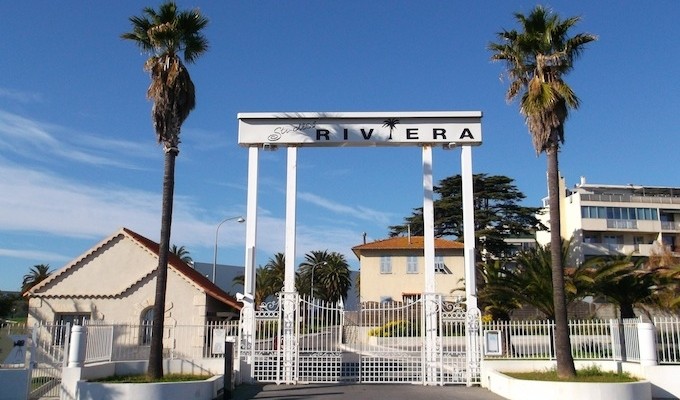The Victorine Studios in Nice have seen many ups and downs over the years, but what future now for this home of cinematic history?
One of the lesser known facts about the city of Nice is that behind the famous Promenade des Anglais and about five minutes away from Nice Airport in the St. Augustin area, lie the Victorine Studios, a film studio built at the same time as the great Hollywood studios in Los Angeles, and which has a long and varied history of filmmaking.
Films were being made in the South of France from 1910 onwards with studios cropping up all over the city of Nice, in areas such as Mont Boron, Cimiez and the Route de Turin, and French filmmakers spanned the era of the silent films from 1910-1929 and then the “talkies” from the 1930s onwards.
The best known of all the studios in Nice was the Victorine, which was built in 1921 by two producers, Serge Sandberg and Louis Nalpas, who planned to turn it into ‘Le Hollywood Français’. Unfortunately Sandberg and Nalpas ran out of money before they could start making films and so, in 1924, a famous Irish-American director and producer, Rex Ingram, stepped in, took over the studios and modernized them, allowing the Victorine become one of the most well-known French studios in the latter part of the 1920s.
In 1926 and 1927, Ingram shot two of his films ‘The Magician‘ and ‘The Garden of Allah’ at the Victorine, and hoped to attract well-known American directors and producers to Nice to make films, encouraging them to come to Europe in order to save money on big Hollywood productions. Unfortunately, after MGM allowed Ingram to shoot the silent film ‘Mare Nostrum’ on location at the Victorine in 1926, they realized that, far from saving them money, the production had actually cost twice the amount to shoot in Nice as it would have done in Hollywood, and they promptly pulled their support for the project. Ingram himself left Nice and the Victorine in 1927, and subsequently then left the film business altogether in 1932, to return to Hollywood to work as a sculptor and writer.
After Ingram’s departure, the Victorine continued to produce films, with sound being installed in the 4 studios in 1929, and then in 1932 the Victorine was purchased by the Gaumont film production and distribution company. Gaumont gave the Victorine a much needed cash injection and encouraged directors such as Jean Grémillon, Alexandre Wolkoff, Jean Delannoy, and Christian-Jaque to come and shoot films in Nice, including several comedies starring the popular French actor Fernandel.
In the 1940s the Victorine was producing more and more movies, and several very well-known French films were shot in its studios including Marcel Carné’s ‘Les Visiteurs du soir’ in 1942, Marc Allégret’s ‘Les Petites du Quai aux Fleurs‘ which was actor Gérard Philippe’s debut film in 1943, and the French masterpiece ‘Les Enfants du Paradis’, directed by Marcel Carné and starring Arletty, still considered to be one of the greatest French films ever made.
‘Les Enfants du Paradis’ was filmed in difficult near desperate conditions at the Victorine during the Second World War. The German occupation of France was in full force, movies were not allowed to be longer than 90 minutes long according to German law, and allegedly, the starving locals employed as extras in the crowd scenes stole and ate the food prepared by the crew before it could be photographed for the film, but the show still went on.
After the war, the Victorine was the only film studio left in Nice, and from the mid-1940s up until the 1970s the studios entered into their glory period. Filmmakers flocked to the Côte d’Azur to make films again.
Many popular films of the 1950s were filmed on-site at the Victorine with huge stars, including Christian-Jacque’s ‘Fanfan la Tulipe’, with Italian star Gina Lollobrigida and Gérard Philippe in 1951, René Clément’s ‘Jeux Interdits’, also in 1951, Alfred Hitchcock’s hugely popular film ‘To Catch a Thief’, starring Grace Kelly and Cary Grant in 1954, Max Ophuls’ ‘Lola Montès’ with Martine Carol in 1955, ‘Cela s’appelle l’Aurore’ directed by Luis Bunuel in 1955, ‘Et Dieu créa la femme’ directed by Roger Vadim and starring his wife Brigitte Bardot in 1956, Jacques Tati’s ‘Mon oncle’ also in 1956, and ‘Lady L’, directed by Peter Ustinov and starring Sophia Loren and Paul Newman in 1964.
The Victorine star shone brightly during this period and during the 1960s and ’70s, the studio opened its doors to some of Hollywood’s biggest stars such as Elizabeth Taylor, Richard Burton, Robert De Niro, Mickey Rourke, Katherine Hepburn and Roger Moore, not forgetting France’s own actors and actresses including household names such as Jean Gabin, Bourvil, Louis de Funès, Alain Delon, Jeanne Moreau, and Gérard Depardieu.
From 1972 to 1973, François Truffaut took over the studios and shot his film ‘La Nuit américaine‘ (‘Day for Night’) at the Victorine with an Anglo-French cast and crew, including a cameo from writer Graham Greene who lived in nearby Antibes. Truffaut’s film, which revolved around the production of a fictitious film ‘Je vous présente Pamela’, was a direct homage both to the cinema and to the Victorine itself, and is considered by many to be one of Truffaut’s greatest productions.
CONTACT DETAILS
Victorine Studios (Riviera Studios)
16, ave. Édouard Grinda
06200 Nice
Telephone: 04 97 25 81 81
![]()
Lead image © RIVIERA BUZZ




Leave a Reply